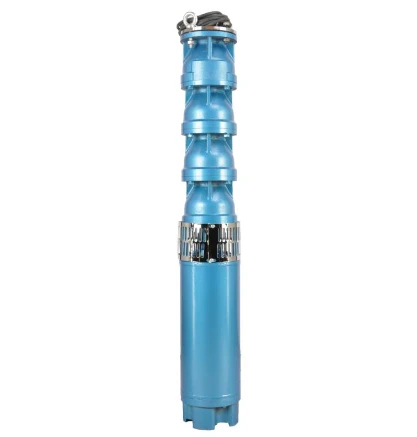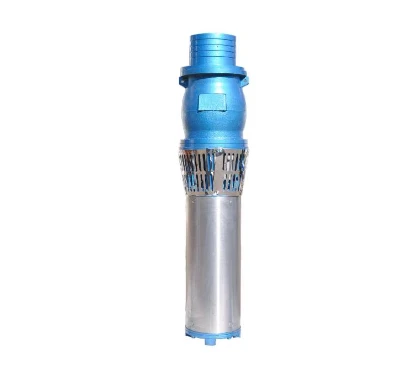Nov . 07, 2024 23:20 Back to list
Efficient Water Submersible Pump for Deep Well and Irrigation Applications
Understanding Water Submersible Pumps A Deep Dive
Water submersible pumps are essential devices in various fields, including agriculture, construction, and even household applications. These pumps are designed to operate while fully submerged in water, allowing for efficient movement of liquid from one location to another. This article will explore the workings, types, advantages, and common applications of submersible pumps.
How Submersible Pumps Work
A submersible pump consists of a motor that is hermetically sealed and submerged in the fluid it is pumping. The design enables the pump to push water to the surface rather than pulling it, which is a critical differentiator from other types of pumps, such as jet pumps. The motor within the pump is usually waterproof, ensuring that electrical components are protected from moisture and flooding.
When the pump is activated, the submerged motor drives impellers, creating a pressure differential that forces the water to flow through the pump and up to the surface through discharge pipes. This mechanism is highly efficient, often resulting in lower energy costs compared to other pumping methods.
Types of Submersible Pumps
Submersible pumps are available in various designs tailored to specific applications
1. Sewage Pumps Designed with durable components to handle solids and wastewater, sewage pumps are commonly used in residential and municipal sewage systems. These pumps effectively prevent blockages and manage waste efficiently.
2. Well Pumps Well submersible pumps are designed for groundwater extraction and are commonly found in agriculture and domestic settings. They can be used to supply water for irrigation or household needs.
3. Utility Pumps Smaller and less powerful than dedicated pumps, utility submersible pumps are versatile devices used for draining flooded basements, emptying pools, or clearing out any accumulation of water.
4. Borehole Pumps Engineered for deep-well applications, these pumps can reach hundreds of feet underground, effectively extracting water from wells and boreholes.
Advantages of Submersible Pumps
Submersible pumps offer numerous benefits that make them a preferred choice for many applications
water submersible pump

- Efficiency By pushing water rather than pulling it, submersible pumps can operate with less energy, leading to reduced costs, especially in large-scale applications like irrigation systems
.- Space-Saving Design Because these pumps operate underwater, they save surface area and do not require large setups often associated with above-ground pumping systems.
- Reduced Noise The underwater operation of submersible pumps significantly reduces noise pollution compared to surface pumps, making them ideal for residential areas or sensitive environments.
- Self-Priming Submersible pumps do not require priming, which means they can start delivering water immediately after being submerged.
Common Applications
Water submersible pumps are versatile and widely used in various sectors
- Agriculture Farmers rely on submersible pumps for irrigation systems, enabling efficient watering of crops and livestock.
- Residential Use Homeowners use these pumps to manage water levels in basements, clear out pools, or supply water for gardens and lawns.
- Construction Builders use submersible pumps for active dewatering on construction sites to prevent flooding and ensure safe working conditions.
- Municipal Services City water departments use submersible pumps in sewage treatment plants and for groundwater extraction in urban water supply systems.
Conclusion
In conclusion, water submersible pumps play a crucial role in the efficient movement of water across various applications. Their unique design, efficiency, and versatility make them indispensable in agriculture, residential areas, and urban infrastructure projects. Whether it is managing waste, supplying water for irrigation, or ensuring safe construction sites, submersible pumps continue to be vital tools for modern water management. Understanding their functionality and advantages can help individuals and businesses make informed decisions regarding water pumping solutions.
-
Submersible Well Pumps Buying Guide
NewsMay.14,2025
-
Submersible Sump, Dirty Water, Borehole Pumps Demystified
NewsMay.14,2025
-
Stainless Steel Submersible Pumps Superior Performance
NewsMay.14,2025
-
High Flow Submersible Well Pumps Essential Features
NewsMay.14,2025
-
Choosing the Best Stainless Well Pump
NewsMay.14,2025
-
A Comparison of Submersible Pumps Filled with Water and Oil
NewsMay.14,2025
-
 Submersible Well Pumps Buying GuideReliable access to clean water is fundamental for residential, agricultural, and commercial operations, making the selection of an appropriate well pump system one of the most important infrastructure decisions.Detail
Submersible Well Pumps Buying GuideReliable access to clean water is fundamental for residential, agricultural, and commercial operations, making the selection of an appropriate well pump system one of the most important infrastructure decisions.Detail -
 Submersible Sump, Dirty Water, Borehole Pumps DemystifiedThe world of water management has undergone a technological revolution, with advanced pumping systems now offering unprecedented efficiency and reliability across diverse applications.Detail
Submersible Sump, Dirty Water, Borehole Pumps DemystifiedThe world of water management has undergone a technological revolution, with advanced pumping systems now offering unprecedented efficiency and reliability across diverse applications.Detail -
 Stainless Steel Submersible Pumps Superior PerformanceModern water extraction and fluid handling systems demand equipment capable of withstanding harsh environments while maintaining peak efficiency.Detail
Stainless Steel Submersible Pumps Superior PerformanceModern water extraction and fluid handling systems demand equipment capable of withstanding harsh environments while maintaining peak efficiency.Detail
